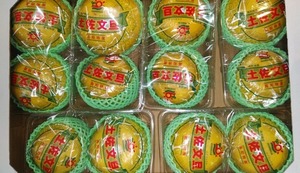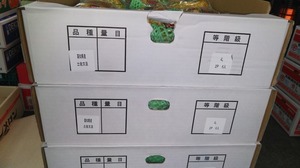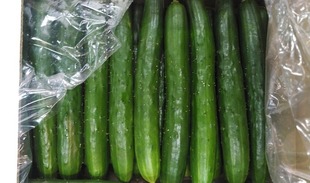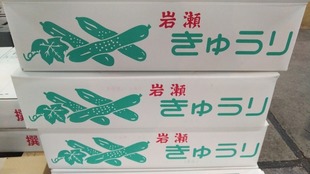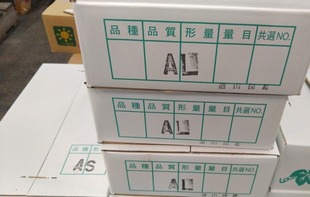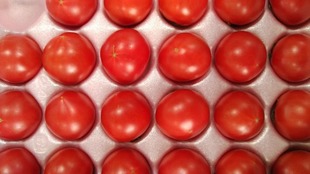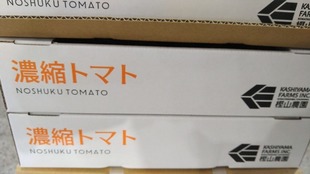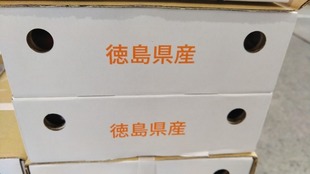Self-willed: He seems to be very selfish, acting only for his own convenience and what he likes, without any consideration for others.
At the time, the Americans described him as a serious and reserved person, but his inner strength was evident in the negotiations. There was no doubt that he thought Japan would become a strong rival in the future(墨夷応接録). During the long-term negotiations, he went to Edo Castle and returned to Uraga, reporting on the progress of the negotiations to such people as Abe, the senior councilor, and Tokugawa Nariaki(1800~1860), the lord of the Mito domain and a member of the naval defense committee. On March 3 (March 31, 1854), the Treaty of Peace and Amity between the United States and Japan was signed in Yokohama Village.
【Project name】
Sengoku cucumber
【Type】
Cucumis sativus
【Within the jurisdiction】
Joso City, Shimotsuma City, Yachiyo Town, Yuki District, Ibaraki Prefecture (JA Joso Hikari, JA Group Ibaraki)
【Origin of the name】
It was named after the former Chiyogawa village (currently Shimotsuma city) and the former Ishige town (currently Joso city) where it was produced. The surface is dark green with a beautiful luster.
【Main features】
Sengoku cucumbers have a soft, juicy skin and a pleasant texture. To produce high-quality cucumbers, the producers are meticulous about soil preparation and cultivation techniques, and they meticulously record cultivation histories. In addition, it seems that producers and related parties gather regularly to check quality and confirm standards so that standards and quality are unified throughout the production area. Harvesting is carried out early in the morning every day, after which each fruit is strictly sorted, sorted, and boxed by the hands of each producer. In addition, it seems that they are careful to handle it carefully so as not to lose its freshness. When it is packed in a box and brought to JA's collection point, it undergoes a strict quality check by JA again and is shipped on the same day, so the quality is unified and it is very fresh, which pleases us. In 1982, Ibaraki Prefecture started the "Fruit Brand Producing Area Designation System'', and designates production areas that meet strict requirements such as sales amount and market price as "brand producing areas.'' So far, 60 production areas have been designated throughout the prefecture. In the future, in cooperation with JA, municipalities, Zen-noh Ibaraki and other related organizations, we will promote production areas (quantity and quality) that can better meet consumer needs, maintain and develop brand production areas, etc. It seems that we will carry out cultivation designated as a production area aiming for. Joso Regional Agricultural Promotion Councils, etc.: Regional agricultural revitalization councils are established based on municipal areas to promote rice production in response to local demand. The aim is to contribute to the promotion of structural reforms in paddy field agriculture and the creation of crop production areas that make use of paddy fields. There are 44 regional agricultural revitalization councils in the prefecture. Agricultural Promotion Areas: Based on the Law Concerning the Development of Agricultural Promotion Areas, agricultural land areas (agricultural land areas within agricultural promotion areas) are established in order to conserve and effectively utilize superior farmland. As a general rule, farmland is not allowed to be converted into agricultural land, so if it is unavoidable to use the land for purposes other than agriculture, it is necessary to apply for exclusion from the agricultural land area in advance and obtain permission. From 2022 to 2025, Basic Policy for Promoting Agriculture in the West of the Prefecture - Realization of Strong Agriculture, Forestry and Fisheries - June 2022: From the Ibaraki Prefecture West Agriculture and Forestry Office. In terms of natural and social conditions, the Western Prefecture Agricultural and Forestry Office jurisdiction consists of 10 municipalities: Koga City, Yuki City, Shimotsuma City, Joso City, Chikusei City, Bando City, Sakuragawa City, Yachiyo Town, Goka Town, and Sakai Town. With an area of 1,031 km2 and a population of 532,000, it is less than 20% of the prefecture, and is dotted with historical small and medium-sized cities. Located within 40 to 80 km from the Tokyo metropolitan area, the JR Mito Line and National Route 50 run in the northern part of the jurisdiction, and in parallel, National Routes 125 and 354 run east-west in the south. In the north-south direction, Kanto in the east. The railway Joso Line, National Route 294, and National Route 4 run to the west, and prefectural roads and municipal roads connecting these major arterial roads are also maintained. Furthermore, in recent years, such as the Kita Kanto Expressway and the Metropolitan Inter-City Expressway. A wide-area transportation network has been developed. Due to its proximity to central Tokyo and its proximity to Tsukuba Science City across the Kogai River, industrial parks and other secondary and tertiary industries have been located within its jurisdiction and urbanization has progressed. Prefectural area 6,097 km2, prefectural population approximately 2,845,000 people (Source: Ibaraki Prefecture population and household (estimate) monthly report as of February 1, 2021) Overview of agriculture in the jurisdiction, production status With the average annual temperature of about 14°C, annual rainfall of about 1,200 mm, and annual sunshine hours of about 1,900 hours, the area is suitable for agriculture. The plateau is a dry-field farming area representative of the prefecture where lettuce, green onion, Chinese cabbage, cabbage, etc. are produced, and large-scale open-field vegetable management utilizing employment is being carried out. In addition, the production of small watermelons, tomatoes, cucumbers, melons, zucchini, bitter melons, and other fruit vegetables such as pears, which boasts the largest shipping volume in Japan, is also thriving, forming one of the nation's leading horticultural production areas. More than half of the regional agricultural output occupies. In addition, the Tonegawa River flows in the southwest of the jurisdiction, and the Kinugawa River and Kogai River flow through it, and fertile paddy fields spread in the river basin. In addition to paddy rice, wheat, soybeans, and buckwheat account for 60 to 70% of the planted area in this prefecture. Production of and progress in land-use agriculture. In terms of livestock, producers of "Hitachi Beef" account for 25% of the entire prefecture, and designated producers of the prefecture's brand pork "Rose Pork" account for 80%. A producer in Bando City serves as the chairman of the promotion council, and beef cattle and pig farming are thriving in this area. The total number of farm households in the western part of the prefecture has decreased by more than 50% to 20,182 over the 25 years from 1995 to 2020. In particular, the number of commercial farm households has decreased from 31,605 in 1995 to 10,472 in 2020, one-third. Decreased to In addition, among commercial farmers, the percentage of full-time farmers whose household income is based on farm income is 26.4% (2020), and this percentage has remained the same since 2000. Decreased by 54% from 6,417 units to 2,926 units. The jurisdiction seems to be proud of its mission to stably supply safe, secure and high-quality Chinese cabbage, which is required as a production area boasting the largest production volume in Japan. In addition, it seems that they are working to establish a position as a production center that will serve as a supply base for Chinese cabbage. In recent years, while problems such as residual pesticides on agricultural products have emerged, JA Group Ibaraki publishes its production history on its website so that it can provide safe and secure agricultural products to consumers. Furthermore, in order to strengthen the traceability system of fruits and vegetables, it seems that they regularly hold seminars on bookkeeping of production history to promote safe and secure Chinese cabbage. The shipping destinations are mainly wholesale companies in the Keihin area, and it seems that they are also widely shipped to Tohoku, Keihanshin, Hokkaido, etc. As an initiative in recent years, in cooperation with Zen-Noh Ibaraki Prefecture Headquarters West VF Station, contract transactions have been carried out mainly for processing work such as pickles traders, and it seems that they have been working since 1996 in the old days. It seems that it is working closely with JA's designated wholesale company and VF station to secure customers and promote contract transactions to expand sales. The green ball cabbage introduced this time is a ball type and weighs about 1 kg. The season is from April to May, and it seems that it is cultivated mainly in Ibaraki and Nagano prefectures in Japan. Since it is vulnerable to the cold, it tends to rarely appear in winter. The feature is that the leaves are firmly rolled up to the inside, and the inside is green and glossy. Also, it is soft for its thickness. In a small form, it is the brand name of cabbage. Nutrients are the same as ordinary cabbage, but carotene seems to contain twice as much as ordinary cabbage and about 1.2 times as much potassium. Ibaraki Prefecture is the fourth largest cabbage producing area in Japan, and most of it seems to be concentrated in the western part of the prefecture where JA is located. In order to promote advantageous sales of cabbage produced in Ibaraki Prefecture, the "Ibaraki Prefecture West Area Agricultural Promotion Council" was organized at 4JA (Kita Tsukuba, Joso Hikari, Iwai and Ibaraki Mutsumi) in the west area of the prefecture, and every year in June and November. It seems that they are holding tasting events twice at Daejeon Market. First ceremonial offering of rice by newly-enthroned Emperor (court rituals held to pray for the well-being of the country and the people and bumper crops: A series of ceremonies will be held on May 8, 2019, three of the Imperial Palace. At the Palace Sanctuaries, His Majesty the Emperor tells the ancestors and gods of the imperial family about the date of the coronation and the central ritual. Probably because of the prestigious connection between the production area and the producer. The Joso Hikari Agricultural Cooperative (JA Joso Hikari) supports the farming and living of its members in two cities and one town, Joso City, Shimotsuma City, and Yachiyo Town, Ibaraki Prefecture. In the jurisdiction, the production of fruits and vegetables such as Chinese cabbage, pears, and watermelons and pig farming are flourishing, centering on the production of rice. In particular, pear production in Shimotsuma City has formed a major market-shipping production area that makes use of the organizational strength to ship almost all of it to the market. In Ibaraki Prefecture, which is the second largest producer of pears in Japan, Shimotsuma City is famous as one of the largest pear producing areas in the prefecture. However, in recent years, the consumption of pears has decreased due to consumers' departure from fruits, and the market price has been sluggish. Shimotsuma City is not an attractive production area for young producers because the name of “Shimotsuma Pear” is low in the market, and there are problems such as the aging of producers due to lack of successors and the decrease in yield due to aging trees. It seems. We aim to raise the name of Shimotsuma Pear and make it a pear that can be selected by the market. With that in mind, young producers and JA Joso Hikari first changed the soil preparation, such as using high-quality organic materials (horse manure) in a unified manner, and used eco-friendly pheromone agents as a way to prevent pests. Worked on. In 2008, a volunteer young producer formed the “Shimotsuma Pear PR Project Team”. We launched “Shimotsuma Kanjuku Pear”, which is particular about the texture and the original flavor of the pear. It is said that the producers themselves negotiated the transaction price directly with the domestic mass retailer buyers and put effort into the production area PR such as tasting PR at the store and holding a pear hunting event. The popularity of Shimotsuma Pear has risen, and the market price has gradually increased. Producers said around June 2018 that they were able to revitalize the production area. On the other hand, in anticipation of a decrease in domestic consumption in the future, it seems necessary to consider exports and decided to aim to develop overseas sales channels. Participated in the trade fair “SME Thailand Expo” held in Thailand in September 2013. We investigated taste preferences and suggested purchase prices using a tasting questionnaire. In October of the same year, 660 kg was exported to Singapore and a tasting PR was conducted locally, but the transaction ended in a single year. In July 2014, we visited Japanese restaurants in Bangkok, Thailand and held business talks. However, the amount of pears that could be exported remained small at 130 kg. It is said that the turning point came when “Jetro” Ibaraki opened in June 2014 while exports were sluggish. I was introduced to the “JETRO” business meeting in Malaysia held in September of the same year and entered immediately. Participated in advance business negotiation skill seminars and learned how to present prices and transaction conditions to overseas buyers. At the business meeting, I was able to meet Japanese company buyers who are interested in Japanese pears. In October of the same year, he also participated in the “JETRO” business meeting in Thailand. I got a good feeling that any business talk would lead to a transaction, but after returning to Japan, I did not receive a reply even if I sent an e-mail to an overseas buyer, so I was consulted by the director of JETRO Ibaraki. He immediately made an international call to the buyer to confirm his intention to trade, and as a result, he was able to export 260 kg of pears to Malaysia. However, he was still worried that the transaction would end in a single year. In April 2015, JETRO Ibaraki conducted a project to invite overseas buyers from Malaysia and Thailand. It seems that they realized the high quality by having them inspect the production site as well as the business negotiations. In addition, he thought that it was important to increase opportunities to actually meet with overseas buyers in order to continue transactions, and he said that he decided to go abroad directly when deciding price negotiations and export schedules. As a result, it was able to increase exports to 6.7 tons to Malaysia and 1.3 tons to Thailand. When I felt the need to develop a new export partner country in order to realize a further increase in exports, I was informed that the import of Japanese pears would be lifted in Vietnam. Aiming at January 2017, when the import ban will be lifted, the garden registration will be carried out ahead of the rest of the country. It seems that a trial export was carried out in March of the same year. In July of the same year, he participated in a business meeting hosted by JETRO in Ho Chi Minh City, Vietnam, and was promoted to many local retailer buyers for tasting. In Vietnam, we challenged to deal with local buyers and expanded to export 105 tons(105000 kgs)in the first year. Regarding local sales promotion, it is said that local consumers have received a great deal of interest by utilizing the “Japan Fair 2017 Ibaraki Prefecture Pear Promotion Event” held by JETRO in Ho Chi Minh City in September of the same year. Until now, we have been focusing on local sales promotion, increasing pear fans by picking pears for inbound tourists, and aiming for a production area selected from overseas. Business: Collection and shipment of fruits (pears, grapes, etc.) and vegetables, sales, market development, etc. Purpose: Export, Target countries / regions: Thailand, Malaysia, Singapore, Vietnam, Canada, Indonesia. “Long, slender eggplant club” : JA Joso Hikari: Agricultural production is broadly divided into rice-growing areas in the east and upland-growing areas in the western Sarushima plateau. In the past, paddy rice, wheat, upland rice, and Pear were actively produced. Since the period of high economic growth, vegetable production has increased as a suburban production area in response to the increase in urban population. The main production of Chinese cabbage was planted shortly after the war, and the production center was formed in earnest with the establishment of the vegetable price stabilization system in 1966. Currently, in addition to Chinese cabbage, horticultural crops such as lettuce, cabbage, and melon are actively produced, and vegetables account for nearly 60% of the sales of agricultural and livestock products, rice field. In addition, since the 1965's, there was a period when contract cultivation of leaf tobacco and tomatoes for processing was actively carried out in the jurisdiction, and since there are many production area markets and purchasers, it can be said that it is a production area familiar to contract transactions. Eggplants are rotated with other vegetables to avoid continuous cropping, and are also produced in combination with winter vegetables (Chinese cabbage, lettuce, cabbage, etc.). Considering that the market price continues to be sluggish and the price is not reflected even if differentiation is attempted, the ratio of contract transactions to the total shipment volume of long, slender eggplant is reduced to about 30% in order to diversify the risk of farm management. I want to. The association at the time of 2008 was composed of six producers as a subcommittee that responded to processing and commercial demand. At the “3rd Domestic Vegetable Production and Utilization Expansion Excellent Business Award” held on March 23, 2010, contract transactions were carried out for 7 years through strong cooperation between the three parties; long, slender eggplant club, National Federation of Agricultural Cooperatives Ibaraki Prefecture Headquarters Horticultural Department VF (Vegetable Fruit) Station (hereinafter, “Zen-Noh Ibaraki Prefecture Headquarters VFS”), Maruhachi Co., Ltd., in order to reduce distribution costs. Introduced a shipping form suitable for processing and commercial use, introduced cultivation technology that enables stable shipping for a long period of time, established a system for stable supply throughout the year in cooperation with production areas in other prefectures, and labor effort by simplifying standards. In recognition of its mitigation, it has been awarded the Ministry of Agriculture, Forestry and Fisheries Production Bureau Director's Award. It originated in India today and is cultivated in China around the 5th and 6th centuries. It was introduced to Japan around the 8th century. It was introduced to Europe in the 13th century and in North America in the 16th century, and it seems that it was not as important as other vegetables. Is it from a beautiful outline? In the Edo period, the technology to make the first eggplant in a little bit started. It seems that the shogunate issued a ban because it was bought and sold at such a high price. When it was introduced to Japan, it was called Kunlun Purple Gourd (Indian Purple Gourd). Cultivation begins under the name “Rangoku Eggplant” in the Shosoin document of the Nara period. It seems that it has reached the present with a semi-forced pry that it is converted from good taste in summer to “make” and “live” and is auspicious. The harvest time and season are from July to October. The decisive difference from the eggplants on the market is the green stems and calyx. It is a place where there are few seeds, the flesh is tight, and it does not easily crumble. It seems that there are 180 varieties of eggplant in Japan, probably because it has been cultivated in Japan for a long time. By the way, it is said that there are more than 1000 varieties in the world. “Slender eggplant”, A variety that is vertically longer than the ‘Senryo eggplant’. Since there is no bulge that protrudes long under the calyx (the part of the neck without seeds), it is possible to take a large number of the same size when sliced into round slices. Since the waistline is short, it does not easily collapse and looks good. Although it varies slightly depending on the place of origin, it gives the impression that the skin is relatively thinner than ordinary eggplants. “Joso City, Ibaraki Prefecture”, Located in the southwestern part of the prefecture, within 55 km from the city center. Tsukuba City / Tsukubamirai City is adjacent to the east, and Bando City is adjacent to the west. The north borders Yachiyo Town and Shimotsuma City, respectively. It extends about 20 km from north to south and about 10 km from east to west. I heard that the area is 123.64 km2. The altitude is about 5 to 24 m, and it has a Pacific climate. In addition, it is a calm and comfortable environment to live in throughout the four seasons. The Kinugawa River, a first-class river, runs almost in the center of the city. The lowlands in the east are vast paddy fields and the west is hiliy areas. Villages and fields, flatland forests spread out. Residential parks, industrial parks, golf courses, etc. have also been created. Urban functions are being strengthened as a suburban maintenance zone. Road system ; National highway 294 is maintained north and south of the city, and national highway 354 is maintained east and west. There are also major local roads and general prefectural roads that connect with surrounding municipalities. In addition, the KENOH EXPRESSWAY has opened in the central part of the city. The development of a wide-area road network is underway. Railroad ; The north-south Kanto Railway Joso Line runs. Toride and Shimotsuma / Chikusei-Connect with Tsukuba Express in Moriya. The commuting area is expanding due to the shortening of the time required to reach central Tokyo. City trees, flowers, birds : Quercus glauca, Laurel forest, which has grown a lot as a virgin forest since ancient times. It is an evergreen, beautiful and powerful foliage, and is deeply rooted in the region. It is also planted as a hedge for wind and fire protection. Even, hard and sticky materials are often used for materials such as agricultural equipment. Since ancient times, he has been closely associated with daily life and has supported everyone. Cerasus Mill., It is a representative of Japanese flowers and is popular because of the beauty of the flowers. In particular, Cerasus jamasakura, which grows naturally on the plateau, is regarded as a symbol of agriculture. Since ancient times, it has been cherished with a deep connection to the lives of farmers. Cherry tree of Hachimanbori (Prunus yedoensis) : Sakura, which was familiar to the citizens, has disappeared, and there are many voices of its resurrection. We hope that the city will become a famous place for Cherry Blossoms again. Horornis diphone, A beautiful cry that conveys early spring. It is a familiar bird that has been called poetry since ancient times.The natural environment is good, and it seems that the cry is often heard even in urban areas. It is suitable for a city aiming for a natural city that is in harmony with such a beautiful environment. Joso Kinugawa River Fireworks Festival : It has been popular with the citizens for many years as a summer tradition. Since 2008, the name has been changed to the current name and the event has been held. The ten thousand fireworks are a masterpiece, and I have visited them several times. Toyoda Castle(region exchange center): The Mr. Kanmu-Heishi(Taira clan)who ruled the region from the end of the Heian period to the Sengoku period. Mr. Toyoda, It is named after the historical fact that the castle was built on the banks of the Kokai River that flows to the east. 寿亀山天樹院弘経寺(Mt. Jugizan-Tenjuin Gugyoji-Temple ; Pure Land sect (of Buddhism)): It prospered as a central temple(Jodo sect)in the Kanto region during the Muromachi period. Founded in 1414 by Tanyo Richo-saint. The Princess Sen(Ieyasu's Tokugawa granddaughter): There is a tomb containing sacred bones. Many beloved items, including the portal, are carefully preserved in the temple. A famous place for Sakura and Lycoris radiata. Every April, the “Tenju Festival" is held on the same day as the “Mitsukaido Princess Sen Festival.” A Sutra-copying party is also held on the 4th Saturday of every month. Concerts that match the flowering time of cluster amaryllis have also been well received. Mitsukaido Climate Museum / Sakano Family Residence, Main house and Front gate (Yakui-mon) are designated as national important cultural properties. The drawing room(Gepparou), which was built as a detachment, is valuable as a modern japanese architecture of Taisho era. It seems that it has been open to the public since 2001. Birthplace of Takashi Nagatsuka, A representative poet of the Araragi school, a student of Mr. SHIKI Masaoka. The author of the immortal work novel “Bauernliteratur ; soil, 1910.” Related to Mr. Soseki Natsume and Asahi Shimbun. It is designated as a historic site in the prefecture, and only the drawing room can be visited. Local brew, At that time, there were three ‘sake breweries.’ YAMANAKA Sake Brewery has been in business for over 200 years. Sake name “Only daughter” ; Sake made with sincerity to raise an important only daughter. NOMURA Brewery was founded in 1897. “Tsumugi beauty”, A gem that maximizes the taste of rice without additives. In addition, it brings out a rich and rich taste. TAKEMURA Sake Brewery is a long-established store for about 260 years. Brews and sells sake “Kyo no Yume, Fujiryu, and Ruri.” Rice crackers, : There are many rice cracker shops, so it's fun.The SAKURAI rice cracker shop carefully bake sun-dried dough. It is a simple dish with an irresistible aroma of soy sauce. MOTOHASHI rice crackers are a long- established store that has been dedicated to senbei for 80 years. We carry out everything from rice purchase to flour milling, dough making, and baking. Carefully bake one by one at the storefront over charcoal. The taste is different depending on the shop, so immerse yourself in the afterglow from each taste. 常総市教育委員会 2007 菅生城址(水海道栄町)常総市埋蔵文化財発掘調査報告 : 県営畑地帯総合整備事業(担い手支援型)菅生地区に伴う埋蔵文化財発掘調査報告書巻次, 集落, 城館, 平安, 竪穴建物2, 土師器, 灰釉陶器, 鉄滓, Investigation of the ruins of a castle in the 16th century, which is said to be the residence of Mr. Soma / Mr. Yokose. 主郭部を除いてほぼ全面調査を行い, 船着場の可能性がある深掘と後北条氏の影響下で増強された畝堀, 角馬出, 横矢掛けの虎口等が検出. 集落, 城館, 中世(細分不明)時代, 堀8, 土塁3, 地下式壙2, 井戸5, 土坑(木橋基礎)3, 土坑(土坑列含む)15, 掘立柱建物2, 竪穴1, かわらけ小皿, 内耳鍋, 擂鉢, 瀬戸美濃, 常滑, 銭貨, 鉄砲玉, 鉄滓, 石臼, 茶臼, 硯, 砥石. Designated cultural property : 建造物国, 坂野家住宅(主家 / 表門), 大生郷町, 昭和43年4月25日, 絵画県 : 絹本着色御廟天神画, 大生郷町, 大生郷天満宮, 昭和35年12月21日, 絵画県 : 絹本着色神酒天神画, 大生郷町, 大生郷天満宮, 昭和35年12月21日, 絵画県 : 紙本着色北野天神縁起絵巻, 大生郷町, 大生郷天満宮, 昭和35年12月21日, 絵画県 : 紙本着色三十六歌仙絵, 大生郷町, 大生郷天満宮, 昭和35年12月21日, 工芸品県 : 阿弥陀如来懸仏, 水海道諏訪町, 個人, 昭和35年12月21日, 史跡県 : 長塚節生家, 国生, 個人, 昭和30年6月25日, 彫刻県 : 木造如意輪観音坐像附紙本墨書書状2通, 豊岡町乙, 法性寺, 平成7年1月23日, 彫刻県 : 木造聖徳太子立像, 附修理銘札3枚, 彩色奉加帳2冊, 菅生町, 無量寺, 平成19年11月16日, 無形民俗文化財県 : 大塚戸の綱火, 大塚戸町, 大塚戸芸能保存会, 平成11年11月25日, 絵画市 : 千姫姿絵, 豊岡町甲, 弘経寺, 昭和56年12月10日, 絵画市 : 絹本著色十一面観音像, 大生郷町, 大生郷天満宮, 昭和59年3月15日, 絵画市 : 絹本著色了誉聖冏像, 豊岡町乙, 法性寺, 昭和62年10月1日, 絵画市 : 渡辺備前守元義肖像画, 古間木, 個人, 平成2年1月8日, 絵画市 : 菅公天神縁起絵巻, 馬場, 天満社, 平成2年1月8日, 絵画市 : 絹本著色嘆誉良肇上人像, 豊岡町乙, 安養寺, 平成25年 2月21日. 建造物市 : 弘経寺鐘楼, 豊岡町甲, 弘経寺, 昭和58年 3月1日, 建造物市 : 弘経寺経蔵(八角輪蔵), 豊岡町甲, 弘経寺, 昭和58年3月1日, 建造物市 : 一言主神社本殿, 大塚戸町, 一言主神社, 昭和59年3月15日, 建造物市 : 八幡神社本殿, 水海道橋本町, 八幡神社, 昭和59年3月15日, 建造物市 : 水海道天神社本殿, 水海道天満町, 水海道天神社, 昭和59年3月15日, 建造物市 : 日枝神社本殿, 菅生町, 氏子総代会長, 昭和63年9月19日, 建造物市 : 別雷神社本殿, 菅生町, 氏子総代会長, 昭和63年9月19日, 建造物市 : 高札台 鴻野山, 個人, 平成2年1月8日, 建造物市 : 高札台 崎房, 個人, 平成2年1月8日, 建造物市 : 旧報徳銀行, 水海道支店水海道, 宝町, 常総市, 平成18年12月22日, 建造物市 : 坂野家住宅書院, 大生郷町, 常総市, 平成18年12月22日, 工芸品市 : 紫龍石の硯, 豊岡町甲, 弘経寺, 昭和56年12月10日, 工芸品市 : 弘経寺 扁額, 豊岡町甲, 弘経寺, 昭和56年12月10日, 工芸品市 : 鉄切付盛上黒塗碁石頭縹糸素掛威(二枚胴具足(てつきりつけもりあげくろうるしごいしがしらはなだいとすがけおどし), 豊岡町甲, 弘経寺, 昭和56年12月10日, 考古資料市 : のろ流出孔栓, 内守谷町, 個人, 昭和58年 3月1日, 考古資料市 : 羽口, 内守谷町, 個人, 昭和58年 3月1日, 考古資料市 : 金剛界大日三尊像板碑, 中妻町, 個人, 昭和58年 3月1日, 考古資料市 : 蔵持建長銘板碑, 蔵持, 蔵持自治会, 平成17年12月22日, 考古資料市 : 西福寺の建長銘板碑, 新石下, 西福寺, 平成17年12月22日, 史跡市 : 千姫の墓, 豊岡町甲, 弘経寺, 昭和56年12月10日, 史跡市 : 累の墓, 羽生町, 法蔵寺, 昭和59年 3月15日, 史跡市 : 六所塚, 蔵持, 香取神社, 平成2年1月8日, 史跡市 : 菅生城址, 菅生町, 常総市ほか, 個人3名, 平成21年10月23日, 書籍市 : 紺紙金泥阿弥陀経, 豊岡町甲, 弘経寺, 昭和56年12月10日, 彫刻市 : 金銅阿弥陀如来立像, 豊岡町甲, 弘経寺, 昭和56年12月10日, 彫刻市 : 木造如来立像, 曲田, 曲田公民館, 平成13年12月1日, 彫刻市 : 木造如来立像及び二脇侍立像, 豊田, 宗心院, 平成13年12月1日, 彫刻市 : 木造正観音菩薩立像, 豊田, 長楽寺, 平成13年12月1日, 彫刻市 : 木造阿弥陀如来坐像, 本石下, 川端自治会, 平成13年12月1日, 彫刻市 : 木造薬師如来坐像, 大房, 東弘寺, 平成13年12月1日, 天然記念物市 : 弘経寺のスギ (来迎杉), 豊岡町甲, 弘経寺, 昭和56年12月10日, 天然記念物市 : 大塚戸のムクノキ, 大塚戸町, 一言主神社, 昭和56年12月10日, 天然記念物市 : 鹿小路のタブノキ, 内守谷町, 個人, 昭和62年10月1日, 天然記念物市 : 諏訪神社のケヤキ, 水海道諏訪町, 諏訪町町内会, 平成14年4月1日, 天然記念物市 : 大日塚大ケヤキ, 鴻野山, 香取神社, 平成2年1月4日, 天然記念物市 : 峯薬師様大椎, 篠山, 峯薬師堂, 平成2年1月8日, 天然 記念物市 : 稲荷神社大ケヤキ, 新石下, 稲荷神社, 平成2年1月8日, 天然記念物市 : 菅生沼タチスミレ群落, 菅生町, 常総市, 平成28年12月23日, 工芸技術市 : 石下結城紬, 工芸技術, 新石下, いしげ結城紬工芸技術保存会, 昭和56年12月7日, 工芸技術市 : 木版画, 新石下, 個人, 平成17年 3月1日, 工芸技術市 : 木版画, 本石下, 個人, 平成17年 3月1日, 無形民俗文化財市 : 内守谷本郷馬鹿囃子, 内守谷町, 内守谷本郷芸能保存会, 昭和59年 3月15日, 無形民俗文化財市 : 長ノ入の獅子舞 (馬鹿囃子), 内守谷町, 長ノ入鬼怒囃子保存会, 平成元年12月10日, 無形民俗文化財市 : 水海道神楽, 水海道栄町, 水海道神楽保存会, 楽々会, 平成11年4月14日, 無形民俗文化財市 : 石下天神ばやし, 原宿, 石下天神ばやし保存会, 平成2年1月8日, 無形民俗文化財市 : 石下飴屋踊り, 本石下, 石下郷土芸能保存会, 平成17年 3月1日, 無形民俗文化財市 : とんだやばやし (神田囃子) , 新石下, とんだやばやし保存会, 平成21年10月23日. “Shimotsuma City”, On June 1, 1954, Shimotsuma Town, Kamitsuma Village, Fusakami Village, Toyokami Village, and Takasai Village merged to form the city. Prior to this, Shimotsuma Town, Taiho Village, and Tobanoe Village were merged on April 1, effectively merging one town and six villages. Then, on January 1, 2006, it merged with Chiyokawa Village, Yuki District and continues to the present day. In addition, the history of this region is old, and it is said that people have lived there for about 10,000 years, but the place name of “Shimotsuma” first appeared in the literature in 935, “Wamyo Ruijusho.” Furthermore, it was not until the Kamakura Period that the word SHIMOTSUMA was written, and from that time to the present, it occupies an important position as the center of the west of the prefecture and has contributed to the region. Located in the southwestern part of the prefecture, about 60 km from Tokyo. It borders Chikusei City in the north, Joso City in the south, Tsukuba Science City and Chikusei City in the east, and Yachiyo Town in Yuki District in the west. Located at 139 degrees 58 minutes east longitude and 36 degrees 11 minutes north latitude, at an altitude of 23.40 m, it is famous as a garden city blessed with greenery and water. With a total area of 80.88 km2, it has a rectangular shape close to a square, most of which is formed of relatively fertile land, with a sand swamp in the center, the Kokai River in the east, and the Kinugawa River in the west, with abundant water resources. The average temperature in summer is 24 ℃, the average temperature in winter is 4 ℃, and the average precipitation is 175 mm in summer and 40 mm in winter. Mild climate. Mainly complex management that combines fruit trees (pears, etc.), vegetables (watermelon, Chinese cabbage, etc.) and livestock (pig farming, beef cattle, etc.) with paddy rice as the axis. Ibaraki Prefecture is one of the most popular pig farming areas in Japan, and Shimotsuma is especially famous as a famous production area. Since the pig farming industry has been active for a long time, there are many butcher shops in the city, focusing not only on meat but also on processing, and each shop is competing for taste. Pears, which represent the taste of autumn, are a specialty of the producers, and their main varieties are red pears, such as Kosui with plenty of sweetness, Hosui Pears with a slight acidity, and Niitaka Pears with large and soft fruits. Among them, “Shimotsuma Sweet and ripe Pear”, which is a limited-time shipment of Kosui Pears fully ripe on the tree, is a gem. After two years of trial production, "Pear Liqueur" that makes the most of the delicate scent of Kosui Pear is also recommended for consumers. Blessed with water, land and climate, it is valuable as one of the leading rice fields in the prefecture. “Koshihikari rice” produced in the city is well-received by consumers as delicious and decorates the table. “Milky Queen rice”, which is now widely produced and has a pleasant texture, is said to have originated in Shimotsuma and is famous as a representative variety. In addition, while working on the development of processed agricultural products such as local beer, natto, ham, and sausage using locally produced agricultural products, we will also ship to the agricultural products direct sales offices of “Roadside Station” and “Yasuragi no Sato” Producing area consumption is being promoted. “Tabanka Festival” : It is a strange festival where you can get rid of disasters by bathing in sparks that can only be seen here in Japan. It is said that its origin is a drama of the fact that when the Daihoji-Temple Bettobo Kenryoin broke out in 1370 (Oan 3), the fire was extinguished using “Tatami; Japanese straw floor covering” and “Nabebuta; Pot lid”. It is said to be a drama of the story. Daiho Hachimangu(大宝; 主祭神: 誉田別命; 応神天皇; 足仲彦命; 仲哀天皇; 気長足姫命; 神功皇后) is famous as the oldest Hachimangu in the Kanto region. This Tabanka Festival, which is held here on September 12th and 14th every year, is also known as the “Wax Gourd Festival” and presents the wax gourd to the shrine. On the tatami mats arranged in a tomoe shape in front of the shrine and the pot lid in the center, “Kawarake (flat plate)” with rice and winter gourd is placed. It is said that a young man in white costume, who is the role of the festival, throws it in front of the hall of worship. It is said that the person who picks up the crushed Kawarake fragments at this time does not get sick, and the worshipers compete to pick them up. It is said that the name came from the banging sound that was emitted at this time. Next, the role holding Torch, who received the torch fire of Great Taimatsu, runs around the precincts while swinging around. It is said that if you are exposed to the sparks of fire, you will be spared the disaster of fire, and worshipers and others will be bathed in cheers. 国登録有形文化財 : 建造物 : 二水会館(旧水海道町役場), 水海道天満町, 常総市, 平成9年12月12日. 五木宗レンガ蔵, 水海道元町, 個人, 平成12年 4月28日, 建造物 : 武道館(旧水海道小学校雨天体操場兼講堂), 水海道栄町, 常総市, 平成15年 7月1日. 下妻市教育委員会 2017 “市内遺跡7” 下妻市埋蔵文化財調査報告書13 : 千草B古墳群第3次; 高道祖字千草, 工業団地造成, 古墳, 古墳時代, 古墳6, 溝状遺構10, 土坑14, 性格不明遺構12, 縄文土器, 土師器, 埴輪, 土師質土器, 磁器. 山神西遺跡; 皆葉字柴野, 個人住宅建築, 集落, 奈良 / 平安時代, 溝状跡1, 土師器, 須恵器, 土師質土器. 柴崎遺跡第3次; 村岡字柴崎, 個人住宅建築, 集落, 縄文, 古墳時代, 溝状遺構1, 土坑2, ピット状遺構3, 縄文土器, 土師器, 磁器. Historic site cultural property : 建造物国 : 大宝八幡宮本殿, 大宝, 大宝八幡宮, M39.04.14, 史跡国 : 大宝城跡, 大宝, S09.05.01, 史跡県 : 駒城跡, 黒駒, S10.11.26, 彫刻県 : 金銅阿弥陀如来三尊像, 高道祖, 常願寺, S37.02.26, 彫刻県 : 木造聖徳太子立像, 下妻乙(栗山), 光明寺, S59.03.08, 彫刻県 : 木造観世音菩薩立像, 肘谷, 肘谷地区, S59.03.08, 彫刻県 : 木造十一面千手観音座像, 下妻乙(小野子), 小野子自治区, H11.1.25, 工芸品県 : 瑞花雙鳥八稜鏡, 大宝, 大宝八幡宮, S40.02.24, 工芸品県 : 銅鐘大宝, 大宝八幡宮, S59.03.08, 考古資料県 : 丸木舟, 大宝, 大宝八幡宮, S59.03.08, 史跡市 : 横瀬夜雨の生家, 横根, 個人管理, S52.03.22, 史跡市, 多賀谷城本丸跡(旧名下妻城), 本城町, S52.03.22, 史跡市 : 浅間塚古墳, 黒駒, 個人管理, S52.03.22, 史跡市 : 小島草庵跡, 小島, S52.03.22, 絵画市 : 絹本著色愛染明王像, 下妻丙(大町), 円福寺, H08.12.26, 彫刻市 : 木造釈迦涅槃像(寝釈迦像), 下妻丙(大町), 金林寺, S61.03.31, 彫刻市 : 木造阿弥陀如来立像, 下妻戊(田町), 雲充寺, H08.12.26, 建造物市 : 石造五輪塔, 黒駒, 個人管理, S54.11.05, 建造物市 : 今泉不動堂, 今泉, 今泉不動尊, 氏子総代, H08.12.26, 古文書市 : 多貿谷氏発給文書, 下妻乙(栗山), 光明寺, H08.12.26, 古文書市 : 親鸞伝絵, 下妻乙(栗山), 光明寺, H08.12.26, 古文書県 : 親鸞門侶交名, 下妻乙(栗山), 光明寺, H19.11.16, 古文書市 : 吉澤家文書, 長塚ふるさと博物館, H08.12.26, 天然記念物市 : 親鸞御手植の菩提樹, 下妻乙(栗山), 光明寺, S52.03.22, 天然記念物市 : 明空御手植の柊, 下妻乙(栗山), 光明寺, S52.03.22, 天然記念物市 : 下妻神社の大欅, 下妻乙(西町), 下妻神社, 氏子総代, S52.03.22, 無形民俗市 : 大宝八幡宮十二座神楽, 大宝十二座神楽保存会, S57.01.08, 無形民俗市 : 大町はやし, 下妻丙(大町), 大町はやし保存会, S54.11.05, 無形民俗市 : 平方はやし, 平方, 平方はやし保存会, S54.11.05, 彫刻県 : 銅造薬師如来立像, 皆葉, 無量院, H7.1.23, 古文書市 : 宗任神社領朱印状, 本宗道, 宗任神社社家, H元.3.17, 古文書市 : 覚幸嶋十二郷豊田三十三郷惣高, 本宗道, 宗任神社社家, H元.3.17, 考古資料市 : 法光寺の板碑, 下栗, 法光寺, H元.3.17, 絵画市 : 絹本著色東方朔図(円山応挙), 大園木, 個人管理, H2.3.17, 考古資料市 : 石造五輪塔, 下栗, 法光寺, H2.3.17, 考古資料市 : 薬王寺の板碑, 宗道, 薬王寺, H2.3.17, 天然記念物市 : 無量院の大ケヤキ, 皆葉, 無量院, H2.3.17, 史跡市 : 村岡柴崎古墳1号, 村岡, 個人管理, H2.10.8, 史跡市 : 村岡柴崎古墳2号, 村岡, 個人管理, H2.10.8, 無形民俗市 : 村岡の高灯籠, 村岡, 満徳寺檀徒衆, H5.2.25, 絵画市 : 明治諸家画帖全19図, 大園木, 個人管理, H5.2.25, 彫刻市 : 石造十三仏伊古立, 伊古立地区, H8.1.18, 歴史資料市 : 青龍権現老樹碑鎌庭, 鎌庭, 香取神社氏子, H14.11.18. “Yachiyo Town, Yuki District”, Jomon pottery, stone tools, and dwelling traces have been found in archaeological sites such as Kuriyama, Ozaki, and Niedo. During the Nara Period, the Kinugawa River, which had been winding around the west side of the Kawanishi District, was renovated to form the current Kinugawa River. In the Heian Period, iron making was carried out at Ozaki Maeyama, farm tools and weapons were made, and a samurai corps was formed. It was around this time that the Taira no Masakado turmoil occurred, and even in Yachiyo Town, Kuriyama, Ashigaya, Hiratsuka, etc. are treated as battlefields. At the end of the Warring States period, the eastern half of the town, including Sugenoya, Waka, and Ozaki, was under the control of Mr. Tagaya, and from the north to the west was under the control of Mr. Yuki. In the Edo Period, due to the change of lords, the Yachiyo area came to have a complicated control of Mibu territory, Koga territory, imperial fief, Hatamoto domain and so on. In the Kyoho period(1716-1736)in the middle of the Edo Period, Iinuma and Yamakawa Swamp will be reclaimed and Yoshida irrigation will be completed. After the abolition of the feudal clan after the Meiji Restoration, the municipality system was enforced in 1889, and the old villages of Anjo, Shimoyuki, Nakayuki, Nishitoyoda, and Kawanishi were born, establishing the foundation of the autonomy system. After that, with the aim of expanding the transportation economic zone and strengthening local administration and finance with the rapid growth after the war, in 1955, the former five villages and Sanwa village Narita merged to form Yachiyo village. With the enforcement of the town system in 1972, it became Yachiyo Town. It is located in the center of the Kanto Plain, southwest of Ibaraki Prefecture, about 60 km to the capital Tokyo, about 70 km to the capital city of Mito, and about 20 km to Tsukuba, a city where science and technology are concentrated. It is adjacent to Shimotsuma City across the Kinugawa River in the east, Koga City in the west, Yuki City in the north, Joso City and Bando City in the south, and National Highway No. 125 runs east to west in the center of the town. The terrain is 7.7 km east-west, 12.4 km north-south, and the total area is 58.99 km2. The terrain is generally flat, with paddy fields open in the eastern part and upland fields in the western part, with the mountain river flowing through the central part of the town as the boundary, and a small amount of flatland forest remains. Wide area above sea level (eastern end) 139 ° 51' (West end) 139 ° 57'(South end) 36 ° 07' (North end) 36 ° 14'58.99 km2 (East and West) 7.7 km (North and South) 12.4 km (Maximum) 29.8 m (Minimum) 18.7 m. Regarding the weather, the average annual temperature is around 14 ℃, and the annual rainfall is around 1,250 mm. In winter, the northwest monsoon blows, but the amount of snowfall is extremely small and the climate is warm. Taking advantage of the flat and fertile land, warm climate, and location conditions near the capital, agriculture is regarded as the core industry, and mainly vegetables, rice cultivation, fruit trees, livestock, and other suburban agriculture are being developed, and the main areas of the metropolitan area. Famous as a food production base. In addition, it is one of the leading horticultural production areas in the prefecture, and among them, Chinese cabbage boasts the largest production volume in Japan, and net-based melons are also cultivated, and pears have been designated as a brand production area(1992年; Akuto Pear))in the prefecture. The town boasts one of the largest melon production in the country, and when the time comes, the scent of sweet melon overflows throughout the town. In recent years, in addition to outdoor cultivation, we have also adopted house cultivation to make sweet and delicious melons. From May to June, many varieties such as Prince, Kinsho, Homerun, Takami, and Quincy are cultivated as spring melons. Among them, Takami Melon, which is the most produced in the town, is a large ball, juicy and has a high sugar content, has a long-lasting meat quality, and is often used as a souvenir and is appreciated. From September to October, Earl's melon is cultivated as an autumn-suppressing melon. Earl's melon is cultivated with strict control of temperature, humidity, water, etc., and only one fruit is produced per plant, giving it a rare and luxurious texture with a smooth texture. As the name Akuto Pear suggests, it grew up in the sober land of the Kinugawa River, bathed in the pure sunlight. Kosui is cultivated in August, Hosui in September, Akizuki in October, and Niitaka. Yachiyo Chinese cabbage is a hot pot dish that is often eaten in the cold season, and is a supporting role of the hot pot. The town boasts the highest production in Japan, producing autumn-winter Chinese cabbage and spring Chinese cabbage, and harvesting and shipping peaks from late October to mid-June. Autumn-winter Chinese cabbage has a softer fiber when exposed to frost, and the sugar content of the leaves increases, so the sweetness also increases. Spring Chinese cabbage is characterized by its freshness and fluffiness. Vitamin C is not lost even when salted, and good intestinal bacteria such as lactic acid bacteria are produced, so there are great expectations for an intestinal regulation effect. In addition to melons, pears and Chinese cabbage, the town produces a lot of delicious vegetables throughout the four seasons. In addition, because it is flat and has good water access, rice cultivation is also popular, and the far-reaching golden countryside occupies about 40% of the total crop harvest area. Chinese cabbage pickled in kimchi, which uses the highest production of Chinese cabbage in Japan, countryside miso, which uses locally produced soybeans, and rich, handmade natural brewed soy sauce that takes advantage of the blessed climate and water quality, have gained popularity for consumption. In addition, there are many flavors of hometown such as handmade dried natto and chewy udon, which gives a simple taste. 県指定建造物 : 佛性寺観音堂 / 仁王門(附観音堂宮殿1基 / 棟札1枚), 2棟, 栗山, 佛性寺, 平29.12.25, 県指定彫刻 : 木心乾漆如来形坐像(付乾漆断片64片), 1躯, 栗山, 仏性寺, 昭57.3.4, 県指定彫刻 : 木造十一面観音立像, 1躯, 大字八町, 新長谷寺. 八千代町教育委員会, 株式会社地域文化財コンサルタント 2009 “菱毛道西遺跡(大字平塚)” 八千代町埋蔵文化財調査報告書13 : 株式会社エフピコ工場建設に伴う遺跡の発掘調査, 工場建設, 集落, 古墳時代, 竪穴住居跡, 土師器: 坏, 甕他, 須恵器: 坏, 甕他, 石製品: 紡錘車他, 土製品: 土玉, 土錘他, 集落, 平安時代, 竪穴住居跡, 土師器: 坏, 甕他, 須恵器: 坏, 甕他, 灰釉陶器: 高台坏埦, 鉄製品: 釘他, 瓦片, 羽口. The Ishige district of Joso City (former Ishishita Town) is a large rice paddy area with the Kinu River in the center, the Kokai River in the east, and the Iinuma River in the west. On the other hand, utilizing this rich land, vegetable management is also actively carried out, and various high-quality vegetables such as Chinese cabbage, lettuce, and zucchini are produced. In particular, the cucumbers produced in the Ishige area have been popular with consumers for nearly 60 years under the brand name of "Sengoku Cucumber", one of the prefecture's leading long-established production areas. "Sengoku cucumber" is cultivated in the adjacent former Chiyogawa village (now Shimotsuma city) and the former Ishishita town. It was named after 1000 koku of rice harvesting and 10000 koku of rice harvesting. The production area has a long history, starting with open-field net cultivation in the 1955s, shifting to greenhouse cultivation in steel-framed greenhouses in the late 1955s, overcoming the oil crisis and two floods in the Showa and Heisei eras, and in 2019, 21 households was working on cultivation of 28 ha. In the production area, in order to stably deliver delicious cucumbers to consumers, we combine a warm cropping type (harvest period: January to June) and a controlled cropping type (harvest period: September to November) and ship them every year. Combining cultivation techniques cultivated over many years of experience with soil preparation that actively uses organic materials, this excellent agricultural product has received high praise from actual consumers, including the market, for its taste and quality. In the production area, it seems that they are working on contract cultivation of cucumbers that are harvested in the morning, in order to make the taste of "Sengoku cucumber" even more prominent and to let consumers enjoy the rich aroma and taste. Each farmer puts the cucumbers harvested in the early morning into containers, collects and ships them, and arranges them in supermarkets in Tokyo on the same day to deliver them to the dining table is increasing. Cucumbers are said to be difficult to differentiate from other products, but the tireless efforts of producers have led to the production of high value-added cucumbers. Like other production areas, this production area seems to be facing the issue of having to take measures such as cultivation area and revitalization due to the aging of producers. As part of this countermeasure, a study group called "Green Mates" has been organized within the subcommittee, centered on the young producer Shichinohe, and is working hard on research and technical study on a daily basis. In recent years, in particular, efforts such as environmental control such as the application of carbon dioxide gas and trial cultivation using "Amblyseius swirskii Athias-Henriot." Adults are 0.3 mm long and pale yellow in color. Eggs are about 0.15 mm in size, milky white, and prefer to lay eggs on the tips of hairs on the underside of plant leaves. It often preys on eggs and larvae of whiteflies and 1st instar larvae of thrips (it cannot prey on 2nd instar larvae and adults of thrips that are larger than itself). It prefers high temperatures and humidity, and its optimum temperature for activity is 28°C. It can survive by eating plant pollen even when there are no pests to feed on, so it goes well with green peppers, which have a lot of pollen. On the other hand, in tomatoes, tomatine (C50H83NO21: an alkaloid glycoside with a structure similar to that of solanine contained in the sprouts of potato tubers during storage.Then, it is toxic to humans, but it has recently been found that tomatine is an ingredient that insects dislike, and it seems that it is difficult to use it because plants dislike the substance secreted by synthesizing tomatine to prevent insects from eating it. Is expected to spread and revitalize the entire production area. Nurtured by continuous high technology and rich land, it will continue to be popular with consumers as a delicious cucumber that represents Ibaraki.



